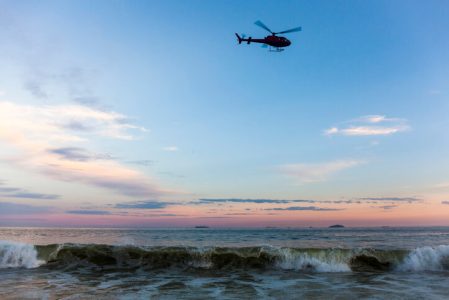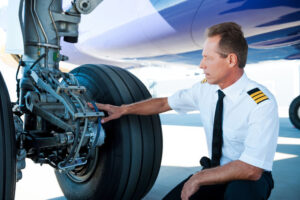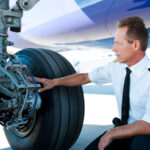Tips and Tricks for Helicopter Pilots Flying Over Water
If you’re a helicopter pilot, you know that flying over water can be an exhilarating experience. Still, pilots of these flights must be especially aware of the potential hazards associated with overwater operations. To help ensure a safe and successful mission, pilots should adhere to certain safety protocols. This blog will discuss key tips and tricks to help you stay safe while travelling over large bodies of water. From proper preparations to avoiding inadvertent instrument meteorological conditions, we’ll cover it all.
Preparation
Before taking off for your overwater flight, it’s important to make sure you are as prepared as possible. One of the most essential steps is to familiarize yourself with your helicopter’s instrumentation and understand how it should be used during an overwater flight.
- GPS Navigation: Ensure your helicopter is equipped with a reliable GPS navigation system that can precisely locate your helicopter’s position while flying over water.
- Emergency Procedures: Always keep emergency procedures in mind and talk through these procedures with any passengers on the aircraft. This is particularly important over water, where response times are slower and distances to emergency services can be greater.
- Equipment: Besides GPS navigation, a reliable communication system and emergency beacon are critical to ensure the safety of the pilot and passengers in case of any unforeseen emergency. Ensure that all helicopter equipment— including flotation devices, life rafts, and PFDs—are in good working condition before takeoff.
Understanding Weather Conditions
Before taking off, it’s important to become familiar with the weather conditions in your area. This includes understanding the wind speed and direction, as well as any potential turbulence or wind shear that could affect your flight. Additionally, you should also be mindful of any changes in the weather that could cause problems if the mission is delayed or extended. By being aware of these factors ahead of time, pilots can plan accordingly and adjust their route if needed.
In-Flight Safety Precautions
When flying over water, it’s important to remain vigilant and adhere to certain safety protocols. One of the most important is to maintain visual contact with land at all times in order to stay oriented and avoid getting lost. Additionally, pilots should be aware of the potential for inadvertent instrument meteorological conditions (IIMC) such as fog or low clouds that could affect visibility. Finally, staying alert for turbulence and wind shear can help you prepare for any sudden changes in weather that could impact your mission. By following these protocols, pilots can protect themselves and ensure a safe overwater flight.
- Reduce your speed: When taking off or landing over water, reduce your speed and approach with caution to ensure a smooth landing.
- Remain Alert: Helicopter pilots must remain alert throughout the flight for any signs of trouble or need for emergency landing.
- Use Spotting Techniques: In addition to having a GPS navigation system, helicopter pilots can use spotting techniques such as looking for identifiable land features, repeated positions of marine vessels, or any other landmarks they may encounter along the way.
Post-Flight Procedures
When returning from an overwater mission, it’s important to take certain post-flight procedures. This includes filing a flight plan, debriefing your crew about the mission, and ensuring that your helicopter is in proper working order before landing. Additionally, pilots should also inspect their aircraft for any potential damages or issues that could have occurred during the flight. By taking these steps, pilots can ensure a safe return from their overwater mission.
- Practice care when disembarking and landing: When disembarking and landing, use caution and ensure that the helicopter is positioned correctly on the water with sufficient clearance from the shoreline.
Conclusion
Flying over large bodies of water requires extra safety precautions in order to ensure a successful mission. Taking the time to familiarize yourself with your instrumentation and understand the weather conditions ahead of time can help you prepare for any potential hazards along the way. By taking the time to familiarize yourself with weather conditions ahead of time, packing emergency supplies, staying alert for potential hazards while in flight, and following post-flight procedures, helicopter pilots can ensure they fly safely over large bodies of water. With the right amount of preparation and knowledge, pilots can make sure their missions are safe and successful.
RELATED CTS TRAINING










